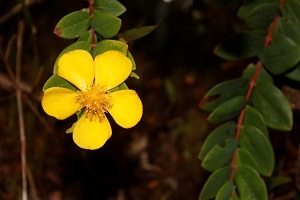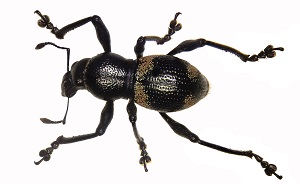
“Mountains are the beginning and end of all natural sceneries,” according to 19th century English writer and philosopher, John Ruskin.
While this may be true, mountains offer much more than spectacular views. A great part of its beauty lies in its being a home to varied and abundant life species, many of which are waiting to be discovered to this day.
In the Philippines, the study, “Biodiversity in selected mountain ecosystems of Mindanao for conservation and sustainable development,” has discovered new species of flora and fauna in Mt. Hamiguitan in Davao Oriental.
Among those discovered were species of flowering plants such as Hypericum perryongii Galindon, sp. Nov and Gymnosiphon syceorosensis (Burmaniaceae). For fauna, a type of snout beetle, Metapocyrtus (Artapocyrtus) brons sp. Nov, and a pygmy grasshopper, Arulenus validispinus, were recorded.

“Arulenus validispinus, commonly known as the four-spined pygmy devil, has not been recorded for more than a century,” explained Dr. Victor B. Amoroso, leader of the Central Mindanao University (CMU) research team. Also discovered were terrestrial orchid species, Dilochia deleonia, and a grass fern called Actinostachys minuta Amoroso & Coritico.
Mt. Hamiguitan is a United Nations Educational, Scientific and Cultural Organization (UNESCO) World Heritage Site. Prior to this, it has already been declared as an ASEAN Heritage Park. The mountain range showcases terrestrial and aquatic habitats, and includes threatened and endemic flora and fauna species.
Aside from Mt. Hamiguitan, Mt. Apo in North Cotabato, and Mt. Pantaron and Mt. Tago, both in Bukidnon, were included in the study also conducted by the University of the Philippines Los Baños-Museum of Natural History, Davao Oriental State University, and the Philippine National Museum.

These findings are part of the Biodiversity Science and Technology Program funded and monitored by the Philippine Council for Agriculture, Aquatic and Natural Resources Research and Development of the Department of Science and Technology (DOST-PCAARRD).
You can learn more of the results of the study, “Flora and Fauna Assessment Using Permanent Biodiversity Monitoring System (PBMS) in Cebu Island Key Biodiversity Areas” through the YouTube series, “Saribuhay,” which can be viewed via DOST-PCAARRD’s YouTube channel: https://tinyurl.com/SaribuhayEp2.
Saribuhay series features the results of the Biodiversity S&T Program. You can view more of its episodes in DOST-PCAARRD’s YouTube channel: https://www.youtube.com/c/DOSTPCAARRD.
